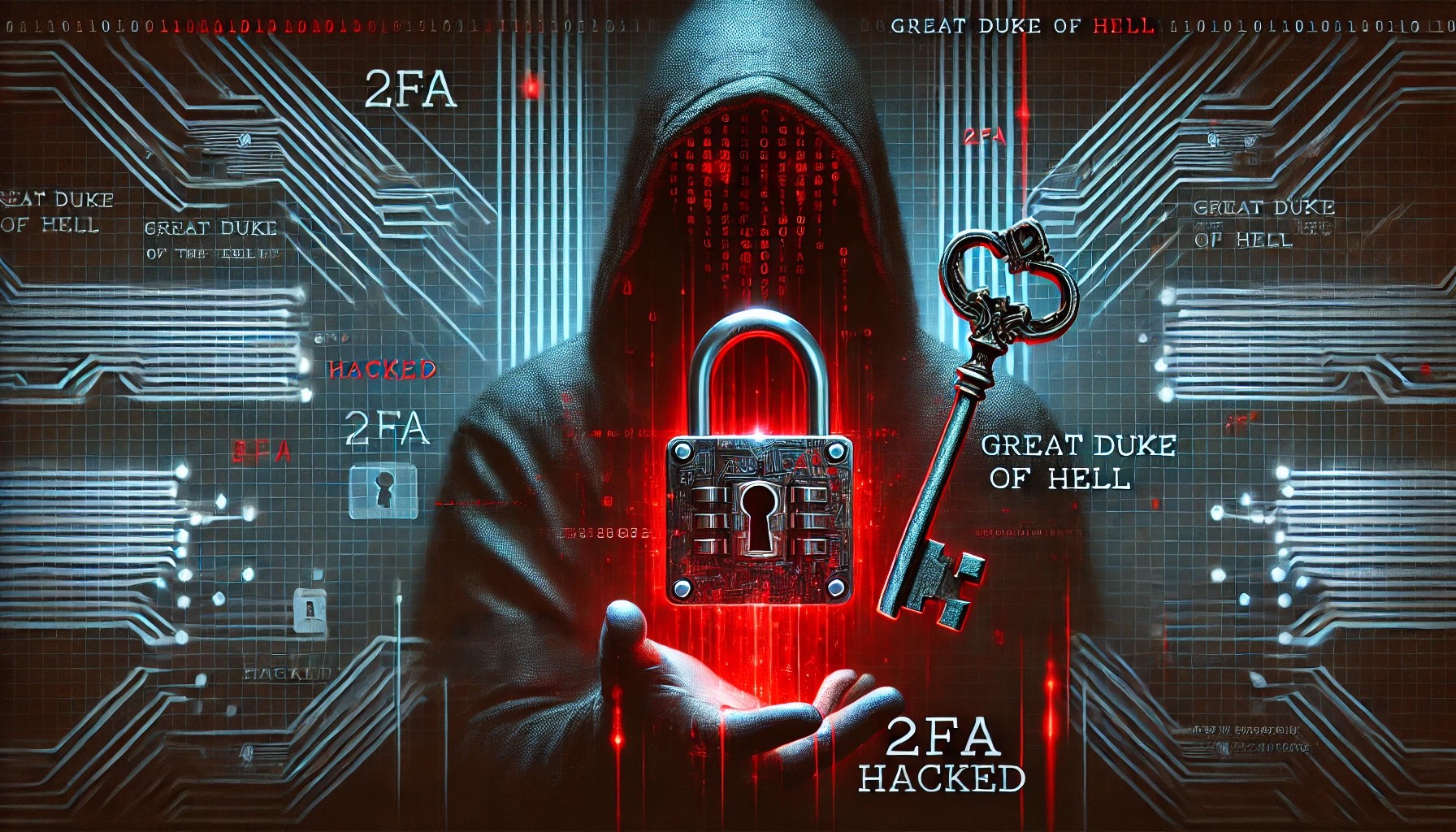How Hackers Bypass 2FA with the Great Duke of Hell Hack Tool

Imagine this: You’ve set up two-factor authentication (2FA) on all your important accounts—email, banking, social media. You feel secure, knowing that even if someone gets your password, they can’t access your account without that second code. But then, one day, you notice strange activity in your email. Messages you didn’t send, purchases you didn’t make. Someone has accessed your account, despite your precautions. How is this possible? Meet the Great Duke of Hell hack tool, a sneaky phishing kit designed to bypass even the strongest security measures like 2FA.
In this article, we’ll explore what this hack tool is, how it works, and why it’s such a danger to two-factor authentication. Plus, we’ll share some practical tips to keep your accounts safe. Let’s dive in!
Understanding the Great Duke of Hell Hack Tool: A Threat to Two-Factor Authentication
What is the Great Duke of Hell Hack Tool? A Deep Dive
The Great Duke of Hell hack tool isn’t just a catchy name—it’s a nod to demonology, where “Great Duke of Hell” refers to powerful figures like Astaroth. Cybercriminals love giving their malware dramatic names to sound intimidating, and this one lives up to the hype. It’s a phishing kit built to crack through two-factor authentication, and it’s sold on shady cybercrime forums for around $2,000, complete with updates and support. That’s right—hackers can buy this tool like it’s a subscription service!
Unlike older scams that just snatch passwords, this tool goes further. It captures your 2FA codes and even session cookies (those little digital keys that keep you logged in) in real-time. This lets attackers take over accounts on platforms like Gmail, Yahoo, or Microsoft 365 without you noticing right away. It’s a next-level threat, and it’s why cybersecurity experts are sounding the alarm.
Breaking Down the Mechanics: How the Tool Operates
So, how does this tool manage to outsmart 2FA? Picture this: You Walk into what you think is your favorite coffee shop. It looks real—same logo, same menu—but it’s a fake setup run by thieves. You hand over your credit card, order your latte, and leave, unaware that your card details are now in their hands. The Great Duke of Hell hack tool works the same way. It creates a fake login page that looks identical to the real one—say, your Gmail or bank login. When you type in your username, password, and 2FA code, it grabs everything and sends it straight to the hackers.
Here’s the clever part: It uses something called a reverse proxy, a kind of digital middleman that sits between you and the real website. This lets it intercept all your data without tipping you off. It’s sneaky, right? Like a wolf in sheep’s clothing. And it’s built to dodge common security checks like reCAPTCHA, making it even harder to spot. That’s what makes this tool so effective—and so scary.
The Looming Threat: Why Two-Factor Authentication Isn’t Enough
Two-factor authentication is awesome. It’s like adding a deadbolt to your front door—your password is the key, and the 2FA code is the extra lock. But here’s the problem: If someone tricks you into handing over both, that deadbolt doesn’t matter. The Great Duke of Hell exploits a big weakness in many 2FA setups—especially when you enter your code on the same device you’re logging in from. Since it captures everything at once, it snags your password and your 2FA code in one fell swoop.
But wait, it gets worse. The tool can also steal session cookies, those handy bits of data that let you stay logged in. With those, hackers can sneak into your account later, even without your password or 2FA code. So while 2FA is a solid defense, it’s not unbeatable—especially against slick phishing kits like this one. It’s a wake-up call that even the best locks can be picked if you’re not careful.
Safeguarding Your Accounts: Tips and Best Practices
Don’t panic! You can still protect yourself from the Great Duke of Hell and other cyber threats. Here are some easy, practical steps to keep your accounts locked down:
- Use a separate device for 2FA: If you can, get your 2FA codes on a different gadget—like your phone—instead of the computer you’re logging in from. That way, even if your laptop’s compromised, hackers can’t grab the code too.
- Watch out for phishing: Those shady emails or texts asking you to “verify your account” or “click this link”? They’re often the bait. Double-check the sender, and don’t click anything that smells fishy.
- Check your accounts regularly: Peek at your account activity now and then. Most platforms (like Google or Microsoft) let you see recent logins. Spot something weird? Act fast.
- Try a hardware key: For extra security, grab a physical 2FA device like a YubiKey. It’s a little gadget you plug in, and it’s way tougher for phishing scams to crack.
- Stay in the know: Cyber tricks evolve fast. Keep up with the latest tips—like reading articles like this!—to stay one step ahead.
Think of it like this: You wouldn’t hand your house keys to a random stranger, so don’t give your login info to a fake website. A little caution can save you a lot of headaches.
Final Thoughts: Staying Vigilant in the Digital Age
The Great Duke of Hell hack tool shows us that no security system is perfect. Two-factor authentication is a fantastic start, but it’s not a magic shield. Cybercriminals are crafty, and they’re always cooking up new ways to break in. The good news? You don’t have to be a tech genius to stay safe—just a little savvy and proactive.
By knowing how tools like this work and taking simple steps to protect yourself, you can keep your digital life secure. In today’s world, vigilance is your superpower. So stay sharp, lock those virtual doors, and don’t let the hackers win!

Cybersecurity threats are rising, and ethical hackers are in high demand to protect systems and data. But how do you…

Ethical hacking is like being a digital detective—you uncover vulnerabilities before malicious actors can exploit them. But even the best…